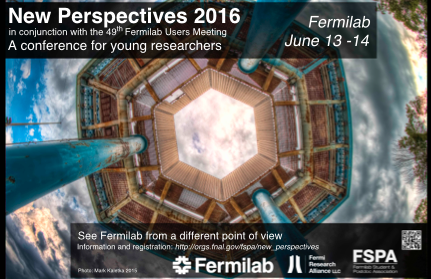Conveners
Session 3: Liquid Argon at Fermilab - the Present and Future
- Regina Rameika (Fermilab)
Caratelli David
(Columbia University)
13/06/2016, 14:00
MicroBooNE is a neutrino detector which employs the liquid argon time projection chamber (LArTPC) technology to image neutrino interactions. The detector sits in the Booster Neutrino Beamline and has been taking data since October 2015. MicroBooNE aims to investigate the excess of low energy $\nu_e$ events observed by the MiniBooNE experiment, and perform $\nu$-Ar cross-section measurements in...
Katherine Woodruff
(New Mexico State University)
13/06/2016, 14:15
The MicroBooNE detector, a liquid argon time projection chamber (LArTPC), is currently running in the Booster Neutrino Beamline at Fermilab. MicroBooNE's high resolution allows a measurement of low-momentum-transfer neutral-current elastic interactions, whose signal is a single short proton track. The probability of these interactions directly depends on the structure of the nucleon and, in...
Mr
Rui An
(Illinois Institute of Technology)
13/06/2016, 14:30
MicroBooNE is a 170-ton neutrino experiment that utilizes a liquid-argon time projection chamber (TPC), which sits in the Booster Neutrino Beamline at Fermilab. MicroBooNE is the first operational detector of the SBN program and started taking beam data in October 2015. The experiment aims to unambiguously probe the nature of the low-energy excess of events observed by MiniBooNE and measure...
Mr
Corey Adams
(Yale Unversity)
13/06/2016, 14:45
The Short Baseline Near Detector, SBND, is an upcoming liquid argon time projection chamber (TPC) at Fermilab. Scheduled to begin running in 2018, SBND will be the near detector in Fermilab's Short Baseline Neutrino program. Thus, it will have tremendous importance to the physics goals of the SBN program, and its proximity to the neutrino source enables it to observe unprecedented numbers of...
Davio Cianci
(University of Manchester)
13/06/2016, 15:00
By utilizing three liquid argon time projection chamber detectors positioned at different baselines along the Booster Neutrino Beamline at Fermilab, the Short Baseline Neutrino (SBN) program will grant unprecedented sensitivity in probing the parameter space of 3 active plus N sterile (3+N) neutrino oscillation models. This talk will present the results of a complete sensitivity analysis of...
Mr
Mark Ross-Lonergan
(IPPP Durham University)
13/06/2016, 15:15
In this talk, we discuss the potential for the Short Baseline Neutrino (SBN) program at Fermilab to constrain non-unitarity in the neutrino sector. Unitarity is a necessary assumption for working in the three neutrino paradigm, but lacks many rigorous bounds, as sensitivity to non-unitarity requires a very detailed understanding of flux and cross-section uncertainties. We present initial...
Bruce Howard
(Indiana University)
13/06/2016, 15:30
The Deep Underground Neutrino Experiment (DUNE) is a next-generation long-baseline neutrino experiment, with one detector located near the origin of a neutrino beam at Fermilab and another located 1300 km away in South Dakota. Using the beam, DUNE will advance knowledge of neutrino oscillation physics, including a measurement of the CP violating phase and a study of the mass hierarchy. A rich...
Ms
Monica Avila
(University of Texas at Arlington)
13/06/2016, 15:45
Increasing the neutrino flux in a long-baseline experiment such as the Deep Underground Neutrino Experiment (DUNE) at Fermilab is essential for precision measurement of neutrino oscillation and CP violation parameters. The goal of this study is to optimize the horn and decay pipe geometry for neutrino flux and physics sensitivity in a cost effective fashion. The DUNE collaboration is currently...
